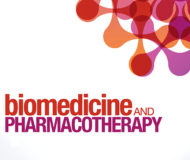

Patients with type 2 diabetes mellitus (T2DM) have a higher prevalence of cardiovascular disease, including both coronary artery disease and heart failure. Diabetic cardiomyopathy is a condition where cardiac dysfunction occurs independently of the presence of coronary atherosclerosis. This condition may be due to various factors, such as metabolic alterations or an increased inflammatory state. T2DM patients have a larger volume of epicardial fat, which is in direct contact with the cardiac myocardium. Under normal circumstances, this fat has a protective function and supplies fatty acids as an energy source for cardiomyocytes. However, when there is an increased volume of epicardial fat, it favors the presence of cardiac dysfunction.
In this context, the hypothesis of the present study was that, in addition to a greater volume, the epicardial fat of T2DM patients is dysfunctional and exerts a harmful effect on the functionality of cardiomyocytes. In the study conducted by members of the CIBER of Diabetes and Associated Metabolic Diseases (CIBERDEM) at the Sant Pau Research Institute (IR Sant Pau) in Barcelona, it is described how the epicardial fat, obtained from cardiac surgery, of T2DM patients shows alterations in the expression of inflammatory genes and genes related to lipid accumulation, and also releases lipids with a negative effect on cardiomyocytes. Specifically, the cultured epicardial fat from T2DM patients secretes more atherogenic ceramide species and, in the case of T2DM with coronary disease, more saturated free fatty acids than that of non-diabetic patients. The study demonstrates how these lipid species are responsible for the inflammatory and cytotoxic effects exerted by epicardial fat on cultured cardiomyocytes.
ApoJ is a protein with chaperone action, contributing to the proper folding of other proteins, and has been attributed cardioprotective properties. A particularly relevant result of this study is that the addition of apoJ minimized the deleterious effects of T2DM epicardial fat on cardiomyocytes. Therefore, the results suggest that apoJ could improve cardiac function, particularly in T2DM patients, by counteracting the harmful effect of epicardial fat.
Dr. Sonia Benítez, CIBERDEM researcher at IR Sant Pau, the last author and corresponding author of the article, points out that “it is highly relevant that T2DM patients, in addition to having a larger volume of epicardial fat, also present a qualitative alteration in it that leads to the secretion of lipid species with inflammatory and toxic effects on cardiac cells, as this could contribute to the onset of the so-called diabetic cardiomyopathy.”
Meanwhile, Dr. José Luis Sánchez-Quesada, also a CIBERDEM researcher and corresponding co-author of the article, states that “the inhibition of the deleterious effect of T2DM epicardial fat by apoJ opens a pathway for the design of strategies based on this molecule aimed at reducing the risk of heart failure.”
Both researchers believe that the findings are innovative, but further research into the mechanisms involved, and the physiological consequences is needed.
Apolipoprotein J Protects Cardiomyocytes from Lipid-Mediated Inflammation and Cytotoxicity Induced by the Epicardial Adipose Tissue of Diabetic Patients.
Puig N, Rives J, Gil-Millan P, Miñambres I, Ginel A, Tauron M, Bonaterra-Pastra A, Hernández-Guillamon M, Pérez A, Sánchez-Quesada JL*, Benitez S*.
Biomed Pharmacother 2024 Jun;175:116779.
doi: 10.1016/j.biopha.2024.116779. Epub 2024 May 21. PMID: 38776681